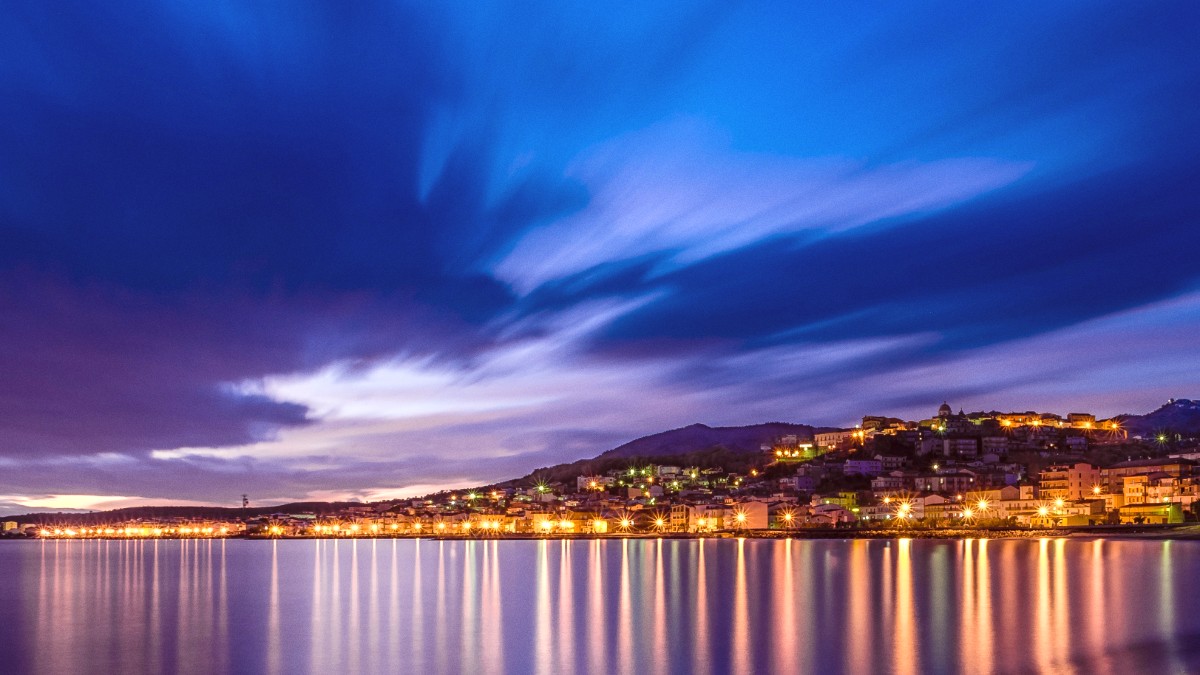
Italy
The region's climate varies across its coastal, hilly, and mountainous zones, influencing activities and crowd levels. Summer means hot and dry conditions, especially along the coast. Mountain areas offer a cooler escape. Autumn brings mild to warm temperatures, suitable for outdoor activities.
Spring temperatures stay mild. Rainfall remains moderate. Winter coastal areas stay mild, while inland and mountains bring significant snowfall, making conditions suitable for skiing.
Beach Holidays & Swimming: June, early July, late August, and September balance warm sea temperatures and manageable crowds.
Hiking & Outdoor Activities: May, June, September, and October offer comfortable temperatures and scenery for Pollino, Sila, and Aspromonte. Cultural Touring & City Exploration: April, May, and October are ideal. Skiing: January through March.
July - August
Warmest weather, festivals, active beach scene.
Large crowds, peak prices, intense heat, parking difficulties.
Apr-Jun, Sep-Oct
Pleasant temperatures, fewer crowds, lower prices for trips.
Smaller coastal facilities might not fully open/close. Occasional rainfall.
Nov - March
Lowest prices. Authentic local feel. Skiing in mountains.
Many coastal businesses closed. Unpredictable weather. Limited transport.
June and September present the best balance for beach relaxation and swimming, with warm sea temperatures and manageable crowds.
May, June, September, and October offer comfortable temperatures and beautiful scenery for exploring Pollino, Sila, and Aspromonte National Parks.
April, May, and October welcome visits to historical sites like Reggio Calabria, Cosenza, and Gerace.
Summertime brings numerous outdoor events and celebrations.
Autumn (September-October) offers a glimpse into local agricultural traditions.
January through March forms the prime season for skiing in the Sila and Aspromonte mountains.
Low season months bring pleasant quiet city breaks and local life without summer crowds.
Navigating visa and entry needs is a main planning step for any international trip. Italy, a member of the Schengen Area, has unified regulations for most short-term visits.
Citizens of many countries enjoy a visa waiver for short stays (up to 90 days within 180-day period for tourism or business). Other nationalities apply for a Schengen Visa (Type C) at an Italian Embassy or Consulate.
Possession of proper documents streamlines entry procedures.
Calabria is generally a more affordable region of Italy compared to popular northern and central tourist destinations.
These estimates provide a general range and fluctuate based on season, specific location, and personal preferences.
Budget Traveler: €50 - €80 daily
Accommodation: €25-€40 (hostel/basic B&B). Meals: €5-€18 (groceries, street food, budget trattorias). Transportation: €1.50-€10 (public buses/regional trains). Activities: €0-€10 (free attractions, occasional museum entry).
Daily Costs: €200+. Stay in 4-5 star hotels, boutique hotels, or private villas. Indulge in fine dining.
Private transfers, high-category car rental, frequent taxi use.
Higher costs for accommodation, dining, and personalized experiences.
Per double room, per night: Hostel Dorm: €20-€35. B&B/Guesthouse: €40-€80. 3-star Hotel: €70-€120. 4-5 star Hotel: €120-€400+. Agriturismo: €50-€150.
Agriturismi often include breakfast and a rural setting, good value.
Luxury properties along the coast reach higher price points.
Coffee (espresso): €1-€1.50. Simple Trattoria meal: €10-€18. Mid-range restaurant meal: €25-€50. Fine dining: €60-€150+. City bus: €1.50-€2. Regional train: €5-€15. Taxi: €10-€20. Car rental: €30-€60/day.
Local trattorias and markets offer delicious, budget-friendly options.
Taxis and fine dining quickly increase daily expenditure.
| Strategy | Description | Impact |
|---|---|---|
| Eat Like a Local | Opt for "trattorias" or "osterias," use markets, look for "menu fisso." | Significant savings on meals. |
| Public Transport | Buses and regional trains offer affordable inter-city travel. | Cost-effective movement between towns. |
| Agriturismi Stays | Farm stays yield value for accommodation, often with farm-fresh meals. | Unique, authentic, and often budget-friendly lodging. |
While Calabria is a generally safe destination for travelers, knowing common concerns and emergency procedures proves useful.
No specific vaccinations for entry. Routine vaccinations current. Hepatitis A/B, Tetanus suggested, especially for rural areas. Consult a travel doctor 4-6 weeks before trip.
Summers are hot. Use High-SPF sunscreen, wear Wide-brimmed hats, Sunglasses, light clothing. Stay hydrated. Limit midday sun exposure.
Mosquitoes present, particularly dusk/rural areas. Use Insect repellent with DEET or picaridin.
Emergency Number: 112 (unified for police, ambulance, fire).
Pharmacies (Farmacie) are widespread, identified by a green cross. Pharmacists offer advice for minor ailments.
Public hospitals (Ospedale) are in major cities. EU citizens use European Health Insurance Card (EHIC). Non-EU citizens rely on travel insurance for costs.
Tap water is generally safe to drink. Food establishments maintain high hygiene standards.
This covers medical emergencies, hospitalization, emergency medical evacuation, and repatriation. (World Nomads, SafetyWing).
This also applies to baggage loss, delay, or theft. (AirHelp for flight issues).
Ensure coverage for hiking, diving, or water sports. Read policy details for coverage and exclusions.
Calabria shows a generally low rate of street crime affecting tourists. The region has a reputation for hospitality. Petty theft sometimes occurs.
Program these numbers into your phone before travel. A family member or trusted contact at home should have your itinerary and insurance details.
112 (Police, Ambulance, Fire)
Carabinieri: 112, Polizia di Stato: 113
Ambulance: 118, Coast Guard: 1530